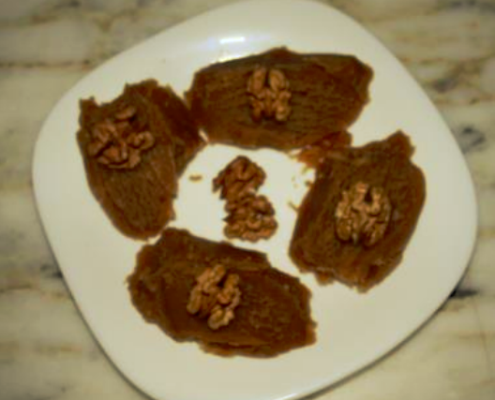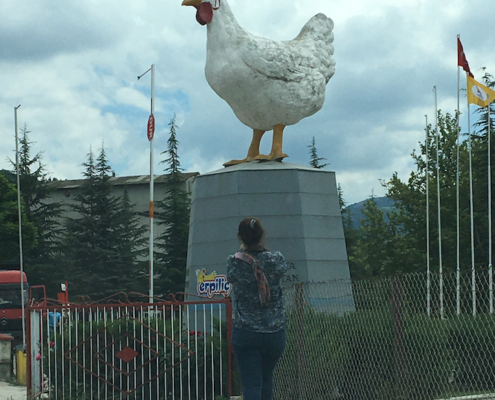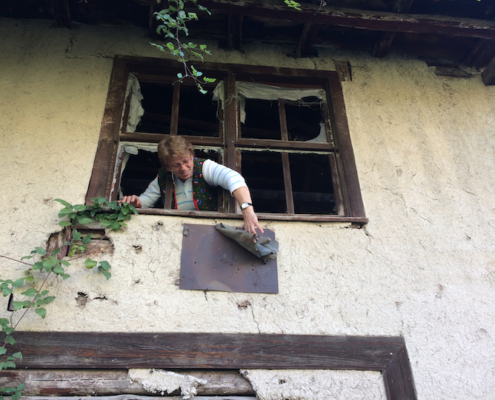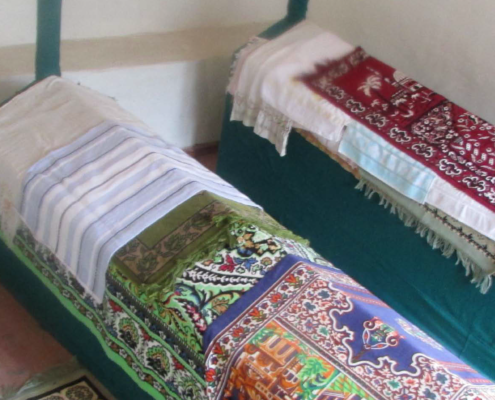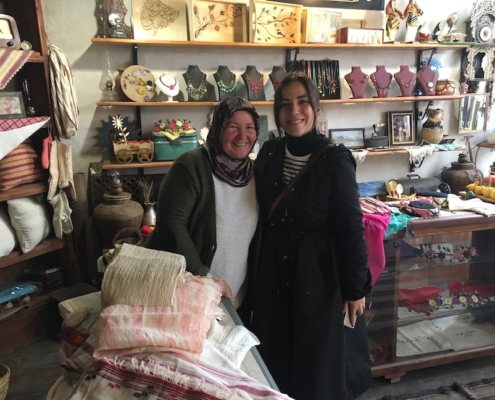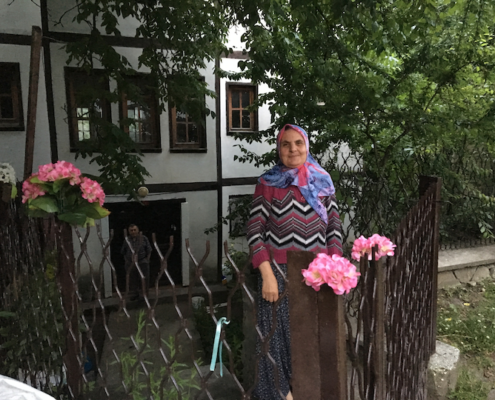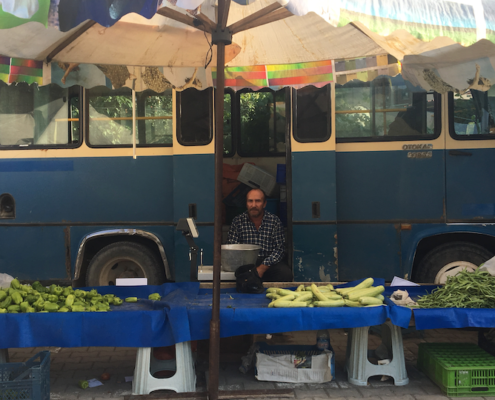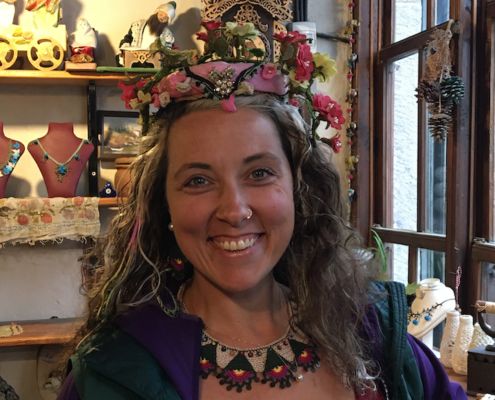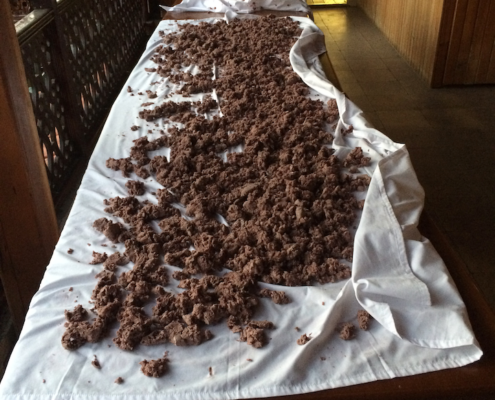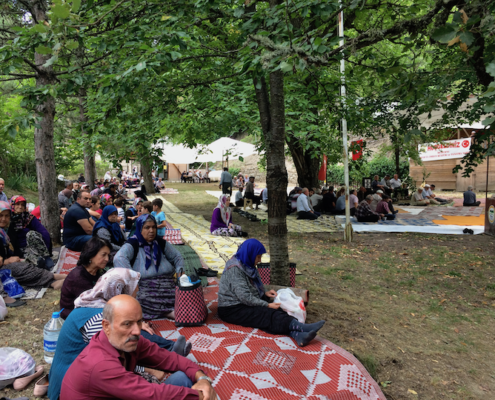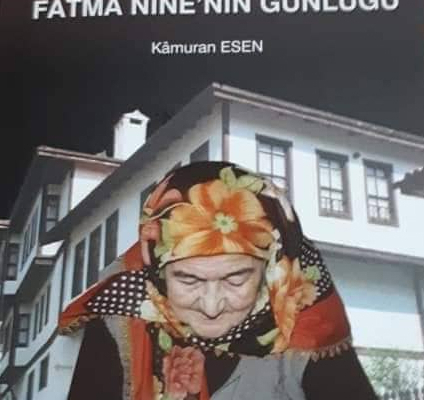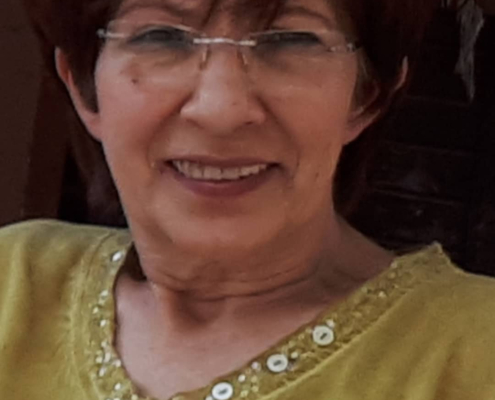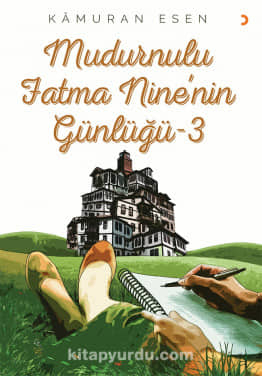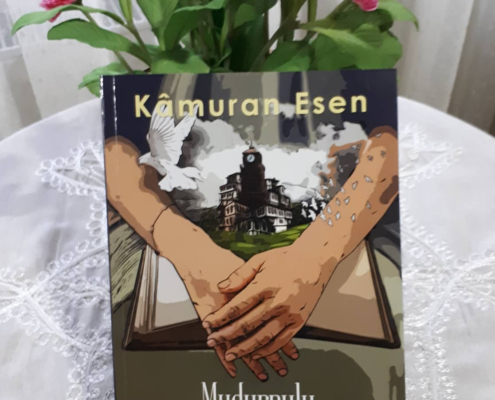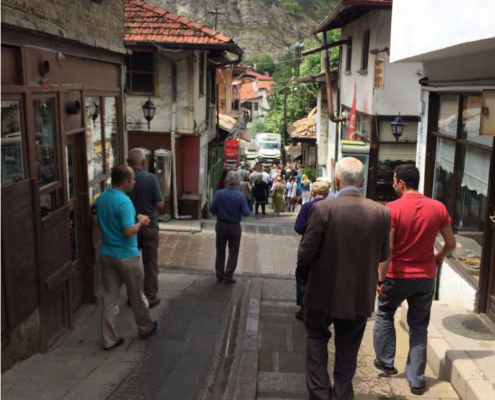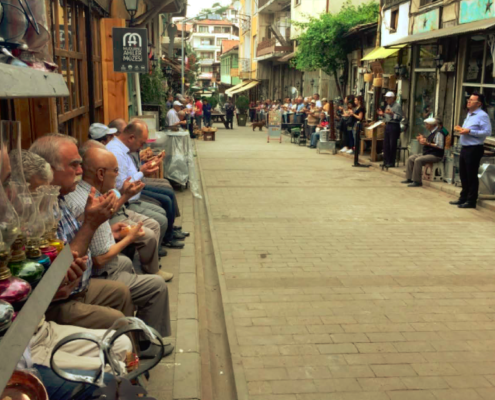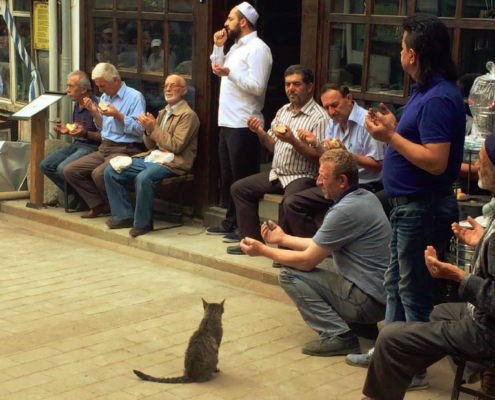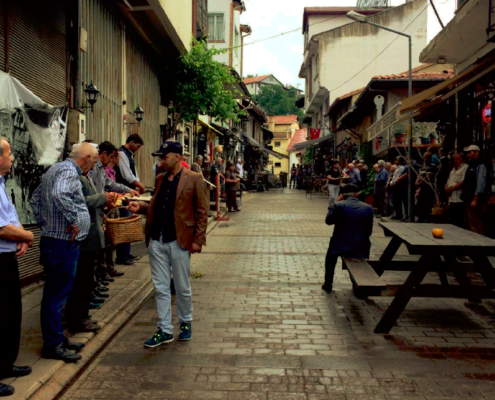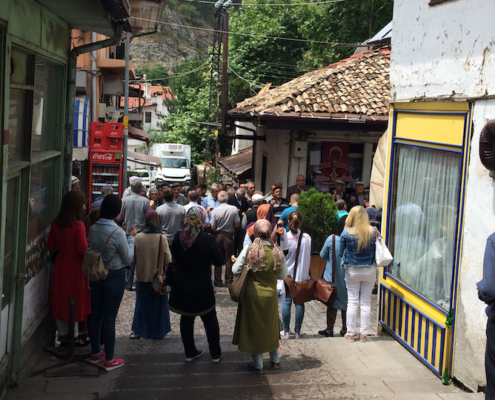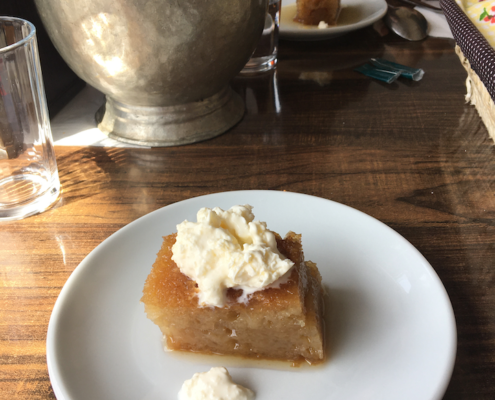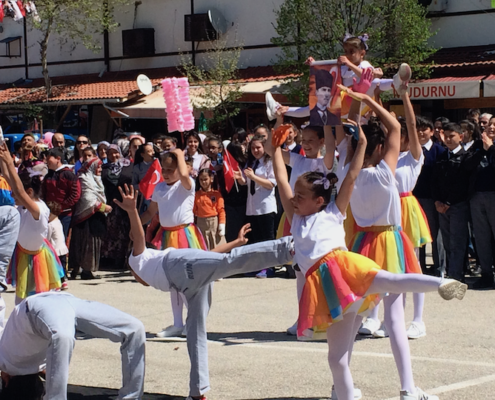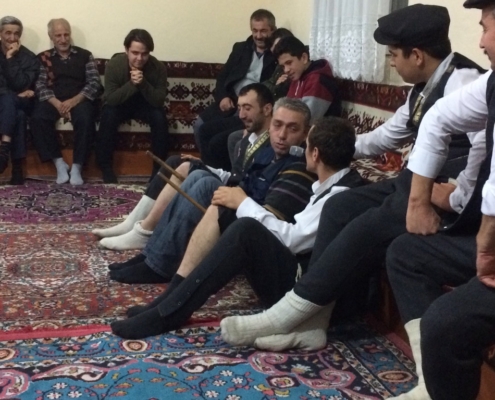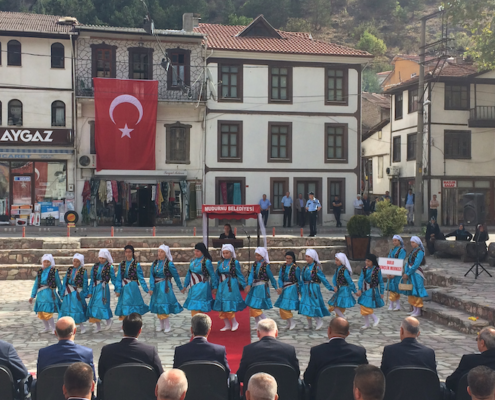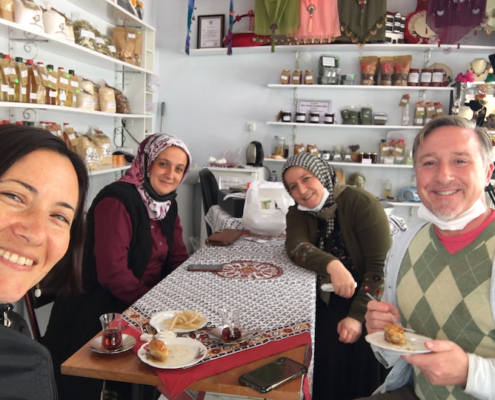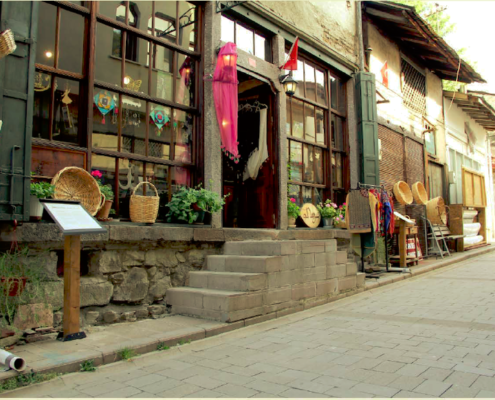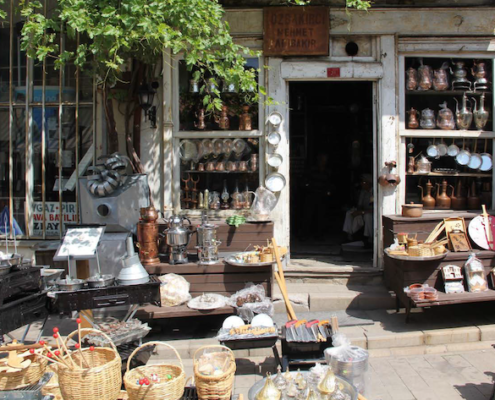Mudurnu Intangible Cultural Heritage, Local Values and Production
Mudurnu Basma Halva
“The geographical indication registrations of our local products continue to be approved”, 30 April 2021
Ahi-Order Tradition and Craftsman Prayer:
There are two different views on the origin of the word “Ahi”: the Turkish word “ahı, aki” means “open-handed, generous”, and the Arabic word “ihve” means “brother”.
Ahilik is a association of tradesmen and craftsmen with moral, philosophical and political principles, founded by Ahi Evran in the 13th century by the Turks in Anatolia, the Balkans and the Crimea. This association was established to provide cooperation, business ethics and solidarity between artisans and craftsmen in Anatolia. Mudurnu is the only district in Turkey that preserves and sustains the Ahi-order tradition, which is based on reason, morality, science and work. Demirciler Bazaar and small shopkeepers still work in Arasta, which is located in three parallel streets in the historical center of the district, and the Craftsmen’s Prayer, which is a tradition of the Ahi community, is held on two parallel streets, the Middle Bazaar and the Demirciler Bazaar, right after knelling on Fridays. At the end of the prayer, food to be eaten by hand, such as bread and Turkish delight, is distributed as a symbol of doing ‘charity’.
See also: https://mudurnu.bel.tr/mudurnu/ahilik-ve-esnaf-duasi
The old Ahi tradition can be considered a fundamental element of Mudurnu’s identity and its most valuable intangible heritage. Ahi-order tradition is based on a philosophy of tolerance and fair distribution of earnings; It is a guild system in the form of a solidarity organization of tradesmen.
Your hand, your waist, your tongue are closed; Let your heart, your door, your forehead be open.”
A Turkish idiom that expresses the understanding of Ahi:
Mahatma Tradition:
‘Walī’ at the origin of the word Mahatma; It is an Arabic word that includes the words “keeper”, “protector”, “helper” and “friend”.Regionally, it is most commonly used to denote an Islamic saint referred to by Muslims more as “friend of God”.There are many Mudurnu saints who lived in the 16th, 17th and 18th centuries and were buried in Mudurnu and whose tombs are here. One of the best known among these is Abdurrahman Trsi, who died in 1519 (926 in the Islamic calendar).
Social Activities and Festivals:
Mudurnu hosts events based upon ancient times and meeting different social groups. In some cases, it is celebrated by combining religious holidays with national holidays.Social life traditionally has a colorful variety in Mudurnu with public celebrations, ceremonies, village market, acrobatic shows at the fair. Residents from the Mudurnu countryside and town come together in the natural environment surrounded by both green and blue. Outdoor activities are carried out with small boats around Lake Abant and among the trees by the lake, with walks and picnics with food and sometimes alcoholic beverages. Citizens also came together to make music in the five city parks of Mudurnu, which existed until recently.
Birikme Nights:
Birikme nights are to educate young men in their transition from their families to society, and to teach them how to eat, sit, talk, play, play the saz, sing, etc. It is a kind of activity performed to improve social behavior. The name “fire travel” comes from a special fire that burned in the house where these meetings were held.
Fair and National Holiday:
The tradition of the “fair ” in Mudurnu is very old and survived during the transition period from the Ottoman to the Republican period. The aim of the fair, which lasts for 3-4 days in September, is for the rural people to sell their products and buy the goods they need after the harvest season. The interest in the animal market is quite high. The fair, which takes place with the participation of various tradesmen groups by setting up tents, brings economic vitality to the region. In addition to commercial activities, sports activities and various entertainment shows for children are staged at the fair.
When new national holidays were added to the social event calendar after the establishment of the Republic of Turkey, the people of Mudurnu reflected the ways of integrating them with the old celebrations by adding Ahi-order elements to the ceremonies. Mudurnu bazaar was known as the Independence Fair (Liberation Fair) in the Republican years and was arranged to coincide with the weeks of October 29 (Republic Day).
Handicrafts:
An important feature of Mudurnu’s intangible heritage is the handicrafts that survive today, albeit in extinction. The most advanced and famous handicrafts in Mudurnu during the Ottoman period are needle making and needle lace (needle embroidery). Other important handicrafts related to metalworking are metalworking and blacksmithing in the Blacksmiths’ Bazaar, which is a part of Arasta and where handicraft activity can be observed most strongly. Evliya Çelebi, who came to Mudurnu in 1640, praised more than a thousand needlework workshops, needles sent to all Ottoman lands, and women who are needlework masters. In addition, timber logs and wood products exported to India, western provinces and wider lands via Istanbul were also a source of praise.
Gastronomy and Local Food:
Depending on the flora and fauna of the region around Mudurnu, a local cuisine understanding has developed with some special products and dishes. The best-known ones among them are Mudurnu Palace Halvası, kaşıksapı (“kesh” made from the dough wrapped around the spoon, a kind of pasta cooked with walnuts and local butter), tarhana and cranberry soups. Mudurnu; It was a preferred region for providing resources for the Ottoman Palace Cuisine with its products such as Saray Halvası, poultry, eggs, butter, cheese, pears, barley and forest products. Many other pastries (pies, gozleme, etc.), mantı, stuffing, soup, halva and pickles are also traditionally produced in Mudurnu. Preparing and serving halva on occasions such as home visits and celebrations continues to be seen as a symbol of generosity.
The city’s handicraft status, including blacksmiths, coppersmiths, tanners, goat-sword weavers, shoemakers, tailors, stove-makers, and saddle-makers, was still sufficiently dominant in the region until the late 20th century. It is known that markets could not be established without the merchants coming from Mudurnu and these goods were also found in the markets of Göynük, Seben, Nallıhan and Istanbul. Mudurnu’s status as the region’s handicraft center disappeared after the 1980s; because the crafts profession had to withdraw from the markets when the market started to monopolize.
Photography and Bengüboz Collection:
Mudurnu has a unique and extraordinary photographic legacy in connection with the events of the early 20th century as a result of the First World War.
Geographical Indication Registration Products
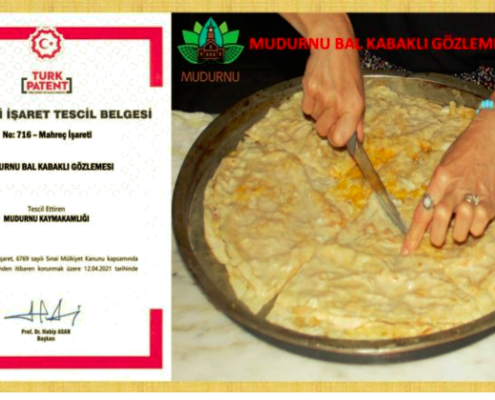
Mudurnu Pumpkin Gozleme
“The geographical indication registrations of our local products continue to be approved”, 30 April 2021
http://www.mudurnu.gov.tr/yoresel-urunlerimizin-cografi-isaret-tescilleri-onaylanmaya-devam-ediyor
Women from Mudurnu:
In Mudurnu, women have always participated strongly and actively in social life. They reveal their productive and self-confident characters by being fed both from the Baciyan-ı Rum (Anatolian Sisters) organization, which is an important element of the Ahi-order tradition, and from the social fabric that has adopted the principles of the Republic. Today, there are many women entrepreneurs among the Mudurnu tradesmen, many institutional officials, academics and social leaders, including those who are members of the Municipality Council. In recent years, two cooperatives have been established by artisans, craftsmen and producer women from Mudurnu. Retired teacher Kamuran Esen has published a series of books after his newspaper column named “Granny of Fatma’s Diary”, with these books he tells life stories from the local Mudurnu.
